-
Posts
270 -
Joined
-
Last visited
Content Type
Profiles
Forums
Store
Help Articles
Posts posted by Baron d'Apcher
-
-
1 hour ago, jmacnaughtan said:
Why would you add baking soda, though? If anything, that should act more as a tenderiser.
I am curious as to whether alkaline water has any effect. Any chemists in the crowd?
-
As it pertains to flour, it should be specified that it applies to white button mushrooms rather than other cultivated/wild varieties.
While I do not know the exact science other than the prevention of oxidation, "cuire dans un blanc" (as opposed to "cuire à blanc" or "blind bake") is a French technique for cooking vegetables such as artichokes (and occasionally offal; sweetbreads I think) in which the liquid is supplemented with lemon juice to lower the pH (make it more acidic, keep the vegetable firm) and a starch (flour). I believe that the addition of flour to the water makes the cooking liquid opaque and thus limits oxidation through light and any addition of fat (oil/butter/animal fat) limits oxidation through contact with the air. But I could be convinced otherwise.
In Japanese cooking, raw suchi ice is often added to the cooking liquid of bamboo shoots to keep them light in color and to remove the bitterness, as with artichokes, though I have yet to supplement flour with rice.
This leaves me wondering if adding baking soda to my mushroom poaching liquid will have any affect...
-
 2
2
-
-
On 11/2/2016 at 1:30 PM, jmacnaughtan said:
Now I need another project

Well done sir (insert applause emoticon).
Consider "Coq en pâte" (heureux come un coq en pâte), Oreiller de la Belle Aurore, Coulibiac, a stuffed fish "Bellevue" or anything in the last chapter of Daniel's last cookbook "My French Cuisine".
-
 1
1
-
-
Unless you are confident that the shanks came from the same animal and joint (front vs rear), it is entirely possible that one was not handled by the students in the same manner as the other, or from an older animal and in the case of rear shank there could be residual blood in the femoral artery or accumulated blood from hematomas if the animals got banged up on the way to slaughter.
Shanks are often better and safer braised conventionally above 170F anyway. And you get the sauce.
-
 2
2
-
-
Consider using cheesecloth (or large sheets of gauze, which are also sterile) to wrap up the critter, again, just like a Tootsie roll (or Carambar) and toque the ends tightly with string. Then truss the length to keep its shape.
Bon Courage.
-
1. For pork back fat, ask your butcher or charcutier for "gras dur de bardiere". They'll have it.
2. Don't bother sewing it up. Lay the hare on the closer side of a 2' long piece of heavy duty aluminum foil and then put in all the forcemeat & such. Roll over away from you and roll the thing up like a Tootsie roll, twisting the edges nice & tight. Put it in the freezer unti it firms up -almost frozen but not a popsicle, take off the foil and wrap in the bard.
2b. Use latex gloves so that your hands don't stink for the next few days.
2c. I wish sheets of bard were readily available in the US.
-
 5
5
-
-
Pork liver, jowl, salted anchovies and a few spices wrapped in some bacon.
 On 4/6/2016 at 4:11 AM, jmacnaughtan said:
On 4/6/2016 at 4:11 AM, jmacnaughtan said:Is "poulet rouge" the same as Label Rouge chickens, or is it a separate variety?
"Poulet rouge" is a red broiler, similar to a naked neck French variety. Label Rouge is a labeling system that verifies quality of agricultural products (from land animals to fish) and can be any number of breeds.
-
 6
6
-
-
Fancy mid-summer themed dinner for my father’s 75th birthday. Gelatin was on sale, Alaskan king salmon was definitely not and there is an abundance of eggs.
King salmon pastrami. Crusted with mustard seed, fennel, chili, lemon zest and dill then smoked.
![27503689930_f2b9dca1b8_z[1].jpg](https://forums.egullet.org/uploads/monthly_2016_06/576744a03c591_27503689930_f2b9dca1b8_z1.jpg.2ccb0b9e259fa322011456e72707abf0.jpg)
![27170488964_930593a700_z[1].jpg](https://forums.egullet.org/uploads/monthly_2016_06/576744bfb657b_27170488964_930593a700_z1.jpg.a17fdd6418a7f4cec200c6f187355a31.jpg)
Eggs in smoky chicken aspic. With a slice of radish and confit gizzard.
![27782010235_5f1ab7d578_z[1].jpg](https://forums.egullet.org/uploads/monthly_2016_06/576744d3613fb_27782010235_5f1ab7d578_z1.jpg.723920fbd99d8f322df50868541ecc2a.jpg)
![27708238261_6b79c5471d_z[1].jpg](https://forums.egullet.org/uploads/monthly_2016_06/576744f1157fe_27708238261_6b79c5471d_z1.jpg.c8323d44674f503940baeafa73662711.jpg)
Pickled eggs with artichokes, cucumbers and cauliflower
![27707757431_82df1898b7_z[3].jpg](https://forums.egullet.org/uploads/monthly_2016_06/5767450eb1d04_27707757431_82df1898b7_z3.jpg.2ac003a135acebe70d023c91eddd1a15.jpg)
Alaskan king salmon ballotine. Stuffed with shellfish mousse, pickled radish scales and white wine aspic.
![27681321892_964b21e05e_z[1].jpg](https://forums.egullet.org/uploads/monthly_2016_06/5767452ac00cf_27681321892_964b21e05e_z1.jpg.42a7c8ac93d7b53f6eb113b0c3d5325a.jpg)
![27170911523_d0eea405db_z[1].jpg](https://forums.egullet.org/uploads/monthly_2016_06/5767453ec0f45_27170911523_d0eea405db_z1.jpg.9e06b175c2db480c8f4cc3674c62cad5.jpg)
![27503731120_b7117480d6_z[3].jpg](https://forums.egullet.org/uploads/monthly_2016_06/57674555a7b78_27503731120_b7117480d6_z3.jpg.06ded3ff70847e8f3cd4938621e07cc0.jpg)
![27681588492_bb0f626025_z[1].jpg](https://forums.egullet.org/uploads/monthly_2016_06/5767456605dc5_27681588492_bb0f626025_z1.jpg.277c2845f9a7995d1de0c938af5213e6.jpg)
![27170567054_052d227bca_z[1].jpg](https://forums.egullet.org/uploads/monthly_2016_06/57674582b11a1_27170567054_052d227bca_z1.jpg.ff7206f8beab641e73b3b7d4e9e43a89.jpg)
-
 20
20
-
-
Poulet Rouge. Stuffed with lovage, thyme and spring garlic. Roasted on mushrooms, some fingerling potatoes, olives, capers, pearl onions, and a few ramps.
![27408207115_c7130d9634_z[1].jpg](https://forums.egullet.org/uploads/monthly_2016_06/574fa94987546_27408207115_c7130d9634_z1.jpg.d53bbdfc2fc1de2bdd3e9d0ea0df75c2.jpg)
![27132901420_2e80996d1b_z[1].jpg](https://forums.egullet.org/uploads/monthly_2016_06/574fa9fd109d1_27132901420_2e80996d1b_z1.jpg.09fc32125caaf272f11f1f462793d2aa.jpg)
Aigo Boulido D'Iou. "One-eyed" spring garlic consommé. Confit gizzards, asparagus, pickled carrots and a coddled egg.
![27132732220_bbfaa0d212_z[1].jpg](https://forums.egullet.org/uploads/monthly_2016_06/574fa9becdbbe_27132732220_bbfaa0d212_z1.jpg.3af9ba10b1bbc6ee0404f385bd8c9fb8.jpg)
-
 18
18
-
-
14 hours ago, weinoo said:
Now that I've found the "sasso" type birds, at a place that's close enough to make it worthwhile for a trip there, most of those birds appear to be in the 4 pound range, and are slaughtered at a much older age than the commodity birds. And the breast tends to be much smaller.
Commodity birds are invariably Cornish Crosses which have been bred to grow very quickly with enormous breasts –which leads to considerable physical liabilities (their legs can’t support their weight). The breed is lethargic, doesn’t scratch or forage like other breeds and is essentially a lazy mutant.
The birds in the Sasso brand have more normal breast-to-leg ratio and grow at a slower (more normal) 12 weeks to slaughter rate than the 8 weeks for Cornish Cross.
It is fascinating that at $0.77/lb, after raising, slaughtering, packaging and shipping, money is still being made on that creature. That’s cheaper than iceberg lettuce and most vegetables. Even dried pasta.
-
 7
7
-
-
Chicken galantines.
![19657373102_f702ca333d_z[1].jpg](https://forums.egullet.org/uploads/monthly_2016_04/5704671799edb_19657373102_f702ca333d_z1.jpg.df07fe59e0c202fcbe68d1a79371c41e.jpg)
Organic poulet rouge with ventrèche, fatback, livers and stuffed morels. Diced, ground, seasoned, rolled in its skin and poached.
![19607171935_19e5969cb3_z[1].jpg](https://forums.egullet.org/uploads/monthly_2016_04/570466288144a_19607171935_19e5969cb3_z1.jpg.874e8db0ebebca410d43cf24bdf043c2.jpg)
Spinach,lettuces & radishes from down the road and a coddled egg.
![19224778078_25027d8510_z[1].jpg](https://forums.egullet.org/uploads/monthly_2016_04/570466a55f1a9_19224778078_25027d8510_z1.jpg.c45be432b18517ca8a7bebcfca2f629a.jpg)
-
 15
15
-
 1
1
-
-
This detracts from the chicken carcass calculus, however:
But our spending on food — proportional to our income — has actually declined dramatically since 1960, according to a chart recently published by the U.S. Department of Agriculture. As the chart shows, the average share of per capita income spent on food fell from 17.5 percent in 1960 to 9.6 percent in 2007. (It has since risen slightly, reaching 9.9 percent in 2013.)
For what it's worth, 3-4 meals from a bird seems to be reasonable when supplemented with vegetables and grains (roasted breast, stuffed legs, braised wings/neck, broth/soup from feet and poached legs).
-
 1
1
-
-
20 minutes ago, DiggingDogFarm said:
That's right, them damn 'Americans' NEVER ever stray from cheap commodity food!!!!!

The overwhelming amount of pork, chicken and beef raised, sold and consumed in the US is CAFO commodity and those pig & chickens never see the light of day. That isn't to say that better products don't exist, but they are expensive and Americans spend very little on food compared to the rest of the developed world and much less than what they spent 50 years ago. It sucks, but that is the reality.
There was a discussion on the merits of better chickens and what people are willing to pay in another food forum.
-
 2
2
-
-
10 hours ago, rotuts said:
Ive never understood shy the French Bird
https://en.wikipedia.org/wiki/Bresse_chicken
isn't grown here esp in the gourmet farms.
There are "Bresse -style" chickens raised in Washington state, but in order to qualify as a bonafide Bresse chicken, it has to be from Bresse and the standards for raising/slaughtering them are very stringent, as mentioned in the wiki-link (they have minimum space requirements and need to be plucked by hand on account of the thin skin). Furthermore, Americans think of chicken as a lowly commodity since factory Cornish Cross became the norm and are too cheap to pay what a quality bird like Bresse would cost.
-
 1
1
-
-
On 3/19/2016 at 11:36 AM, weinoo said:
But you know that the feet generally aren't included in most, if not all, supermarket style birds. In Chinatown, yes.
Baron - have you had a Sasso bird yet?
Sasso isn't a specific breed and could be any one of many birds, so maybe. I have had Poulet Rouge (Freedom Ranger) and black footed Poulet Noir from Mattituck/Cutchogue, Long Island as well as Yellow Gâtinais in France in the past year. I saw a stunning variety of poultry in France (up to $30/lb Bresse capons) last year during the holidays, the likes of which we will never see in the US unfortunately. All with feet, neck and giblets. Some birds at Hugo Desnoyer (Paris, 14th) were eviscerated to order. Top notch quality and flavor.
Poulet Rouge (Browder's; Mattituck)
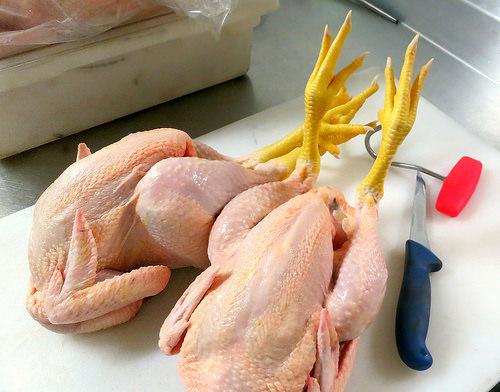
Poulet Noir (8 Hands Farm, Cutchogue)

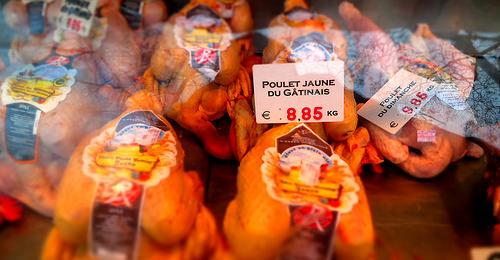
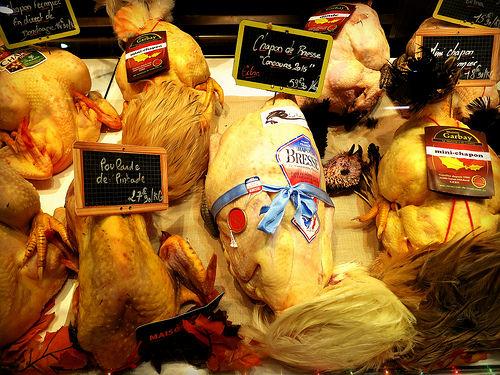
-
 7
7
-
-
If you aren't getting the neck, feet, gizzard, heart and liver, they are holding out on you. Those parts should be included.
-
 3
3
-
-
For some friends who got hitched the other day. Pâté en Croûte. Tamworth pork, heart, tongue, mini mortadella inlay and wedding bells on the side.
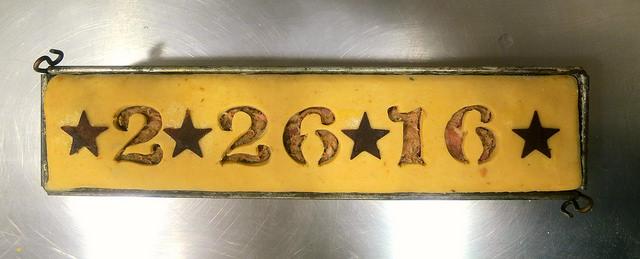
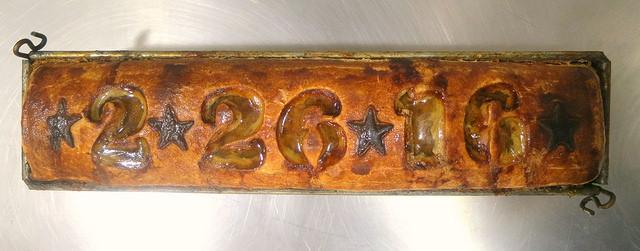


-
 14
14
-
-
55 minutes ago, boilsover said:
It costs more, needs to be looked after, can't be machine washed. Frankly, IMO those are the only reasons, along with unfamiliarity, it isn't used more by 9/10 top chefs and home cooks.
Those are considerable reasons. Buying 2 stainless steel pots for the price of 1 copper is more pragmatic and the cooking results away from the microscope are negligible. Quite simply, the fat cats use copper because they can afford to buy it and can pay people to maintain them (like a $5-million McLaren, when a Subaru will do). However, l'Astrance (and Fäviken) use non-stick for their fish, for what they will argue are very practical reasons.
-
TG2015

Pickled mackerel. Garlic, lemon and rosemary
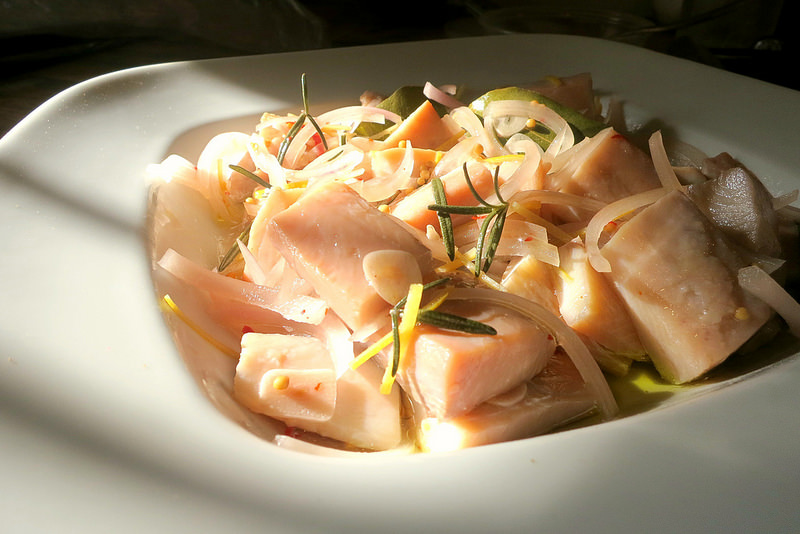
Roasted Virginia chestnuts

Smoked turkey consommé. Smoked turkey neck, broccoli and carrots.
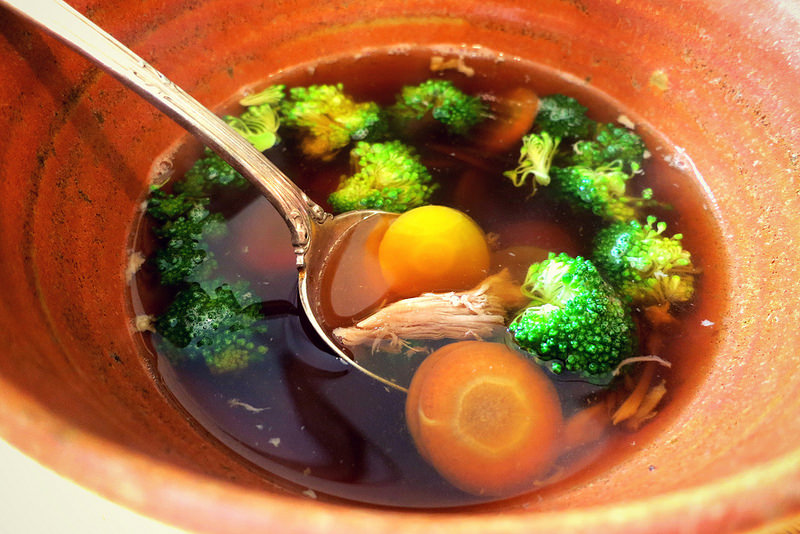
Sort of like root vegetable stuffing. Turnips, rutabaga, carrots, celery root, pearl onions and Brussels sprouts glazed in duck fat with some toasted bread.

Cauliflower Polonaise. In a white cauliflower and sweet onion soubise before being gratinéed with clarified butter and lemon-toasted breadcrumbs.
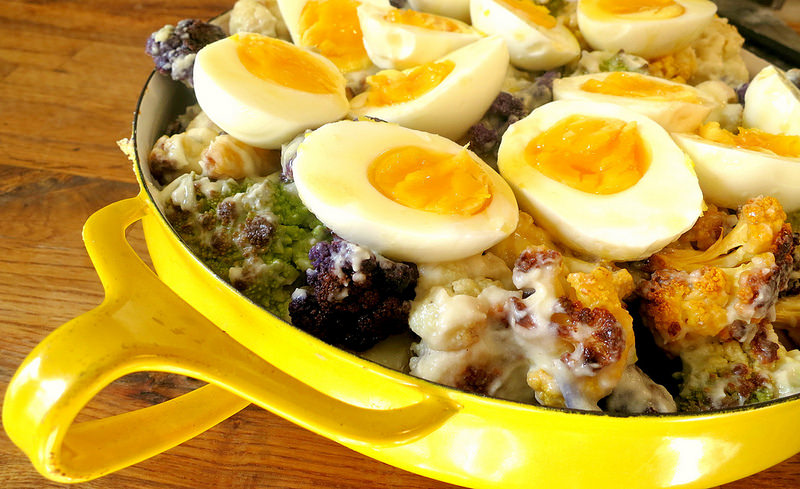
Turkey leg and liver ballotines with confit gizzards.

Turkey leg ballotine roasting in gravy with Virginia chestnuts, Brussels sprouts and cranberries.
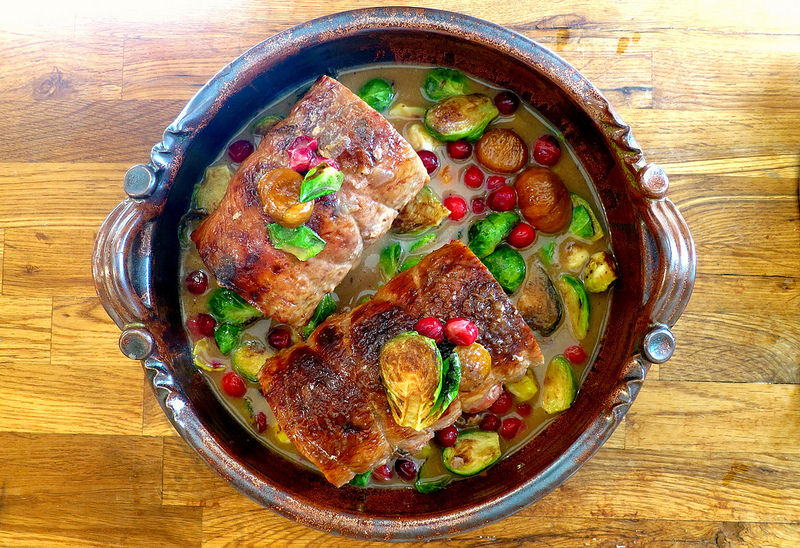

Turkey breast, roasted on the bone with sage.
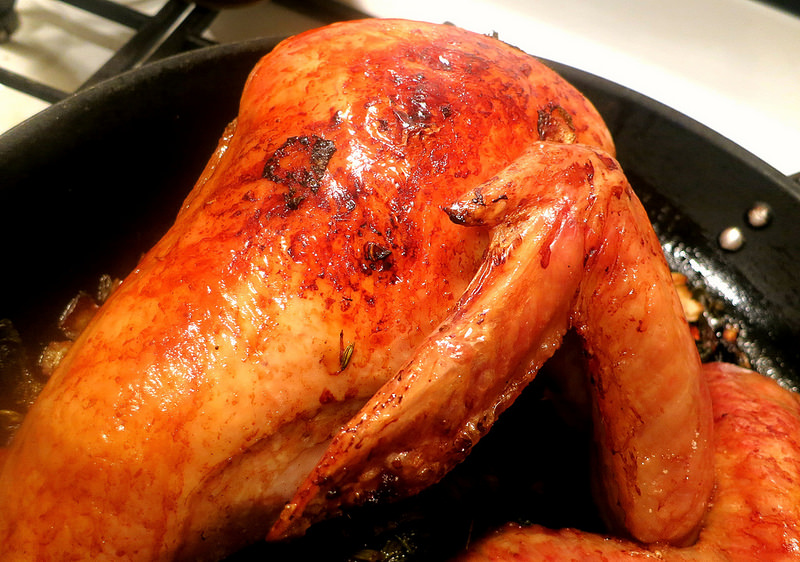
Turkey pies. Confit gizzards, black truffle, cranberries and pecans in savory brown-butter pastry

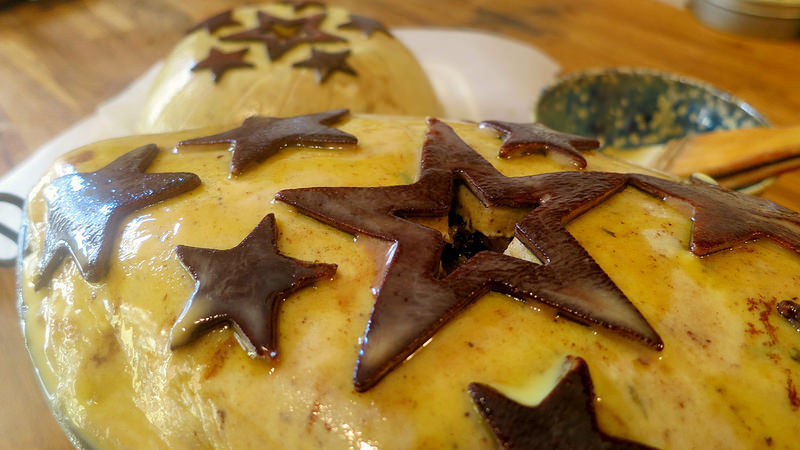

With spiked cider aspic.

-
 22
22
-
-
For what it is worth, "round" in beef butcher's speak is the whole hind leg, which is comprised of the top round, outside round/silverside, eye of round, knuckle/bottom round and then the shank & gooseneck. The tri-tip wraps around the knuckle and the culotte or top sirloin cap covers the the top sirloin (which is part of the loin).
It would appear to be a cross cut from the end of the top sirloin (after the "Y" shaped silverskin that make it less desirable than the striploin and a bit more difficult to butcher), with the heart of top sirloin (very tender) at the bottom which the French call "langue de chat" (cat's tongue).
-
 1
1
-
-
The 2 halves are held together with wingnuts on a swivel. The base fits into the 2 halves and ratchets down on springs.
Sort of like this one, which is much bigger and only 2 pieces.
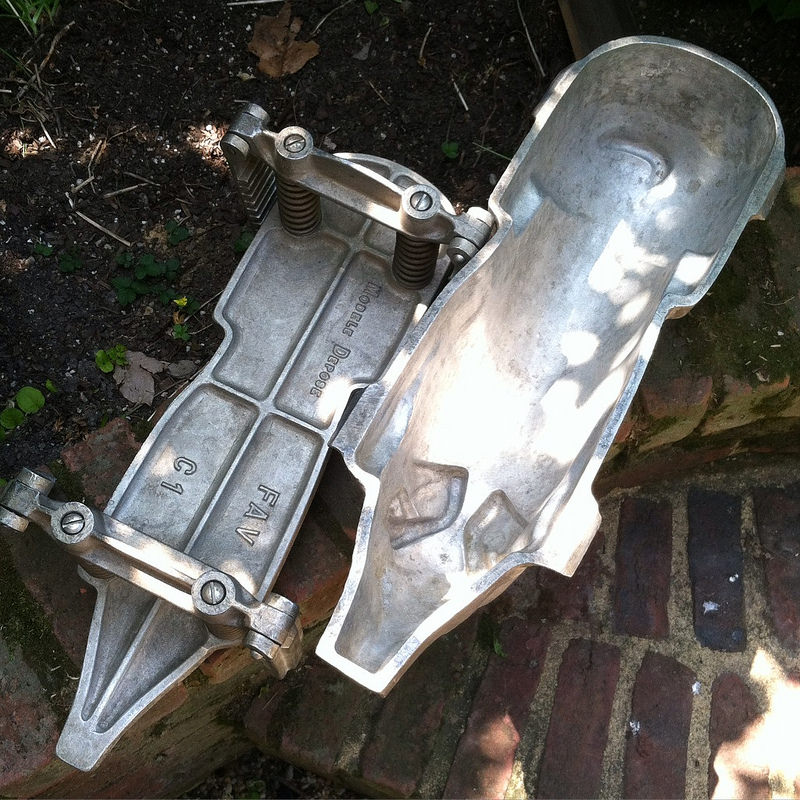
-
 2
2
-
-
Pressed ham with whole grain mustard. And pickles. Cast aluminum pig mold from yesteryear France.
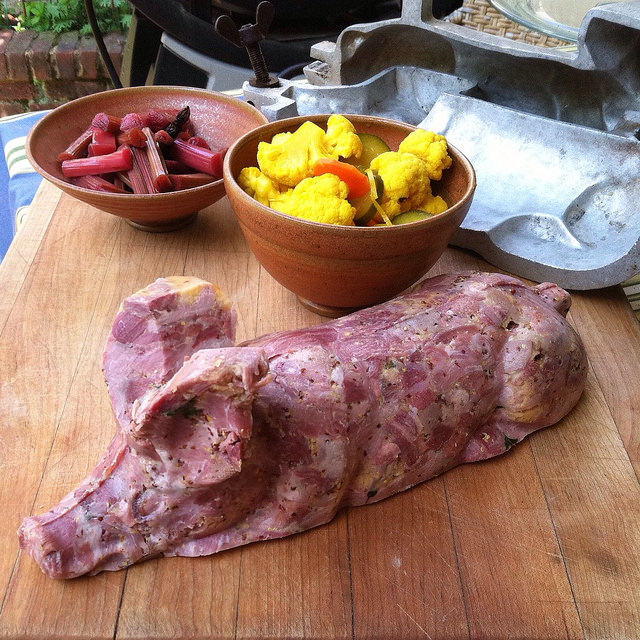
-
 8
8
-
-
Tamworth pork and Peking duck pâté in savory pastry with confit gizzards, pistachios and ham.
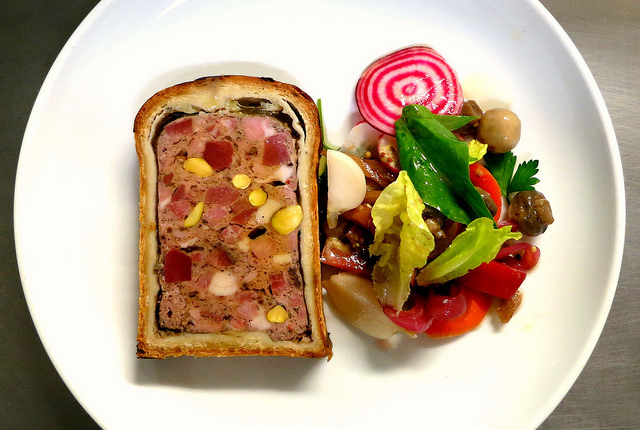
Tamworth pork & Peking duck pâté in savory pastry. Pickled rhubarb, gooseberries and sungold tomatoes.
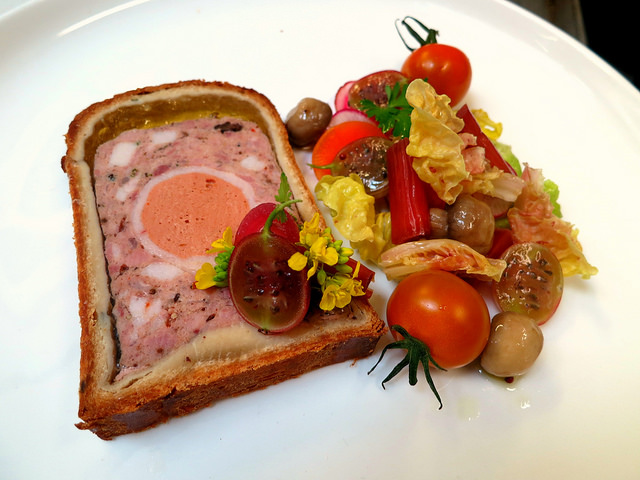
-
 5
5
-
-
Wet brining (adding moisture) then dry salting (removing moisture) is a very curious approach. Chuck-roll has plenty of water/fat.
Freezing meat crystallizes the water inside and expands, busting the cells and as it cooks will loose more moisture -like how thawed items leech so much water- making it drier.
Consider reading Harold McGee.
Water in meats
http://dwb.unl.edu/teacher/nsf/c10/c10links/www.fsis.usda.gov/oa/pubs/watrmeat.htm



Washing mushrooms in flour water
in Cooking
Posted
Correct. I was reading varying articles in French on lemon juice inside and outside the body and got my wires crossed. I corrected the previous post.
Alkaline water preserves color in green vegetables (but makes them more fragile) and I wonder if it helps preserve the white color of button mushrooms. Probably not, or else there would be tips for it somewhere on the interwebs.